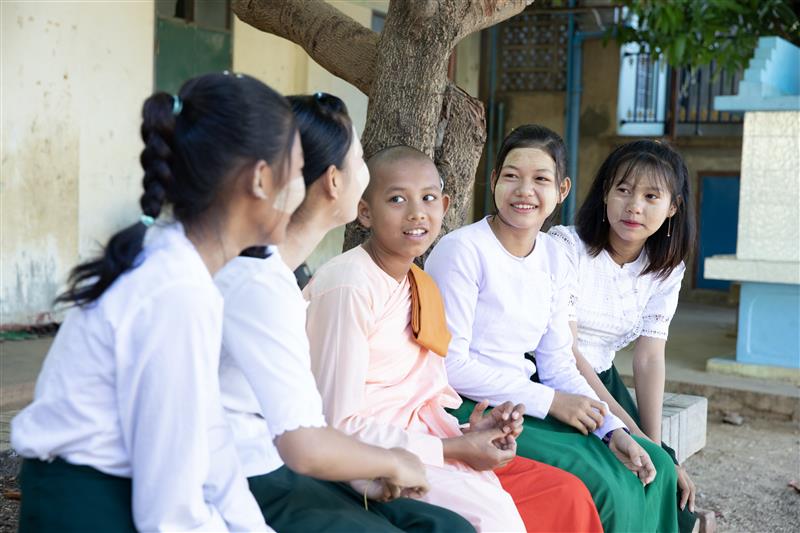


Modelling and Biostatistics group
Modelling is critical for translating data into decision-making evidence. Our modelling guides effective and cost-effective responses to infectious diseases and global health problems.
Group heads
About this group
Our dynamic, interdisciplinary team uses modelling to guide practical, cost-effective responses to infectious diseases and global health problems. We’re at the forefront of modelling across areas including:
- COVID-19 and pandemic preparedness
- hepatitis C
- hepatitis B
- HIV
- tuberculosis
- malaria
- nutrition
- maternal, newborn and child health
- adolescent health
- vaccines, health systems and service delivery platforms.
Our methodological approaches are adapted to the data available and key policy questions being addressed, and include a variety of:
- deterministic and stochastic models
- population-level and agent-based models
- compartmental and network models
- costing studies
- cost-effectiveness analyses
- cost-benefit and return on investment analyses
- resource optimisation analyses
- analyses of large datasets using statistical and machine learning approaches.

Listen now
Learn more about our modelling work in the How Science Matters podcast.
Current projects
View 7 more
Eliminate Hepatitis C Australia (EC Australia)
Partnering to eliminate hepatitis C as a public health threat by 2030.

Improving disease outbreak response time in the Pacific: 7-1-7 tool testing
We're working with partners to see how the 7-1-7 approach can help track and respond to disease outbreaks in the Pacific.

How stable housing can support people who use drugs (HOUSED)
Australia is experiencing a housing crisis, and people who use drugs are being left behind. To address this, we're analysing the social, economic and health benefits of stable housing for people who use drugs.
Past projects

Pathway to Clean Indoor Air
A 2-year research project that tests solutions in real-world settings to identify scalable, evidence-based solutions for improving indoor air quality in schools, public spaces and public sector offices.

The Optimise Study: Optimising Isolation, Quarantine and Distancing for COVID-19
This project aims to find out how Victorians are experiencing COVID-19 and responding to the measures introduced to stop the spread of the virus.

Transparent risk assessment of COVID-19 quarantine (traQ study)
This study uses a mathematical model to examine the circumstances in which quarantine for COVID-19 could be reduced from 14 days without substantially increasing the risk of virus transmission.
News and features
View 2 more
Life-saving impact of global vaccine stockpiles
New Burnet research highlights the critical role of global vaccine stockpiles in preventing widespread outbreaks of deadly diseases.

Offering COVID-19 booster vaccinations alongside influenza vaccinations could reduce hospitalisations and deaths
Timing your COVID-19 booster with your annual flu vaccination may be a convenient and effective way to protect yourself against both viruses.

Prison needle programs could save millions
Burnet research shows how prison needle and syringe programs could save treatment costs for hepatitis C and injection-related infections.

Prison needle programs could save double what they cost – our new modelling shows how
Australia leads the world in community-based needle and syringe programs. But they are not used in Australian prisons – which are hotspots for injection-related infections.

Foreign aid cuts could mean 10 million more HIV infections by 2030 – and almost 3 million extra deaths
Written by Dr Rowan Martin-Hughes, Burnet senior research fellow; Dr Debra ten Brink, Burnet senior research officer, and Associate Professor Nick Scott, Burnet head of Modelling and Biostatistics.
NHMRC Investigator Grants
Burnet researchers Joshua Vogel and Nick Scott have received funding for projects relating to pre-eclampsia prevention and hepatitis C and HIV elimination.

Lady Potter, Burnet Emerging Leader Fellowships

Simple measures lessen hospital acquired COVID-19 infections
In a new study published in the Journal of Hospital Infections, Burnet researchers found simple infection control measures could save lives and reduce costs for hospitals.

Improved maternal health outcomes in Burnet modelling for Gates Foundation
Why Victoria’s public health restrictions weren’t in vain
Lockdowns and other public health restrictions made for difficult times in Melbourne during 2020 and 2021. But the sacrifices we made saved thousands of lives, writes Burnet Institute Deputy Director, Professor Margaret Hellard AM.
Featured publications
COVID-19 epidemic modelling for policy decision support in Victoria, Australia 2020–2021
BMC Public Health
Nick Scott et al
A global investment case for hepatitis B elimination: a modelling study
˜The œLancet. Gastroenterology & hepatology
Chris Seaman et al
A model of the economic benefits of global hepatitis C elimination: an investment case
˜The œLancet. Gastroenterology & hepatology
Nick Scott et al
Optimising HIV spending in 12 eastern European and central Asian countries: a modelling study
The Lancet HIV
Debra Ten Brink et al
Health and economic benefits of achieving contraceptive and maternal health targets in Small Island Developing States in the Pacific and Caribbean
BMJ Global Health
Sherrie L. Kelly et al
Resources
-
Cost-effectiveness of a novel syphilis test: full input parameters, and sensitivity analyses
This report includes modelling about the cost-effectiveness of a new syphilis test self-test.
Cost-effectiveness of a novel syphilis test: full input parameters, and sensitivity analyses [PDF 282.8 kB] -
Optima model website
Home to the Optima HIV, TB, Nutrition and malaria models and background documents.
Group contacts

Associate Professor Nick Scott
Head, Modelling and Biostatistics
Group members

Associate Professor Nick Scott
Head, Modelling and Biostatistics

Dr Rachel Sacks-Davis
Senior Research Fellow

Aimée Altermatt
Research Assistant

Alexander Thomas
PhD Candidate

Dr Chris Seaman
Research Officer

Dr Debra ten Brink
Senior Research Officer

Dominic Delport
Health modeller

Dr Farah Houdroge
Research Officer

Fenella McAndrew
Mathematical Modeller

Kelvin Burke
Mathematical Modeller

Nisa Wulan
Health Modeller

Phillip Luong
Mathematical Modeller

Dr Romesh Abeysuriya
Senior Research Officer

Dr Rowan Martin-Hughes
Senior Research Officer

Dr Sherrie Kelly
Honorary Staff

Dr Tharindu Wickramaarachchi
Mathematical Modeller

Thomas Walsh
Health Modeller

Alina Muellenmeister
Mathematical Modeller

Dr Damian Pavlyshyn
Postdoctoral Research Officer

Dr Anna Wilkinson
Senior Research Fellow

Tim Spelman
Biostatistician

Eloisa Perez-Bennetts
Mathematical Modeller

Dr Thi Nguyen
Data Scientist

Dr Amanda Roxburgh
Senior Research Fellow

Dr Katie Heath
Senior Research Officer




